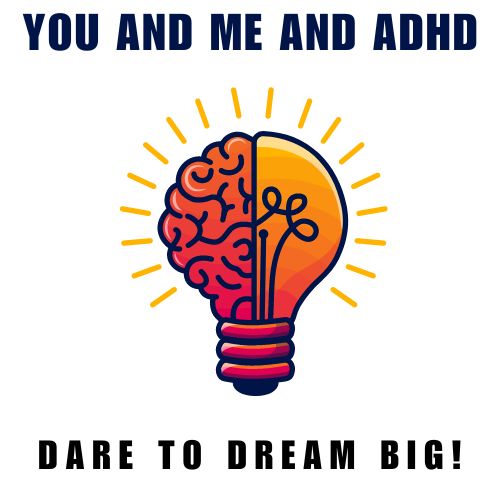
Whether ADHD is real disorder has plagued the general population since ADHD became mainstream in the late 1970s. This post will show you why ADHD is real and why people think it’s not. Of course, the convoluted history of ADHD, with its many twists and turns, hasn’t helped to clear the murky water.
Common Myths About Childhood ADHD
The public doesn’t know what to believe because of a largely irresponsible press corps bent on sensationalizing everything. Add a wealth of conspiracy theories concerning ADHD and Big Pharma, and you have all the ingredients for a goulash of ADHD information! Listed below are some of the reasons people think ADHD isn’t real:
- ADHD is a condition that affects children, not adults
- ADHD only affects boys
- ADHD is the result of bad parenting
- ADHD symptoms are just temper tantrums
- Character flaws can explain ADHD
- ADHD is used to explain troublemakers in class
- Sports will fix ADHD
- Children in divorce situations have ADHD
- Sugar explains the hyperactive component of ADHD
- Too much TV causes ADHD
- ADHD is just a phase
Common Myths About Adult ADHD
- ADHD is a social phase, like bell-bottom pants in the 1970s
- ADHD is just another way of saying socially maladjusted
- It’s procrastination, not ADHD
- If people would apply themselves, ADHD wouldn’t exist
- Stupidity is The social variant of ADHD
- If you’re smart, you can’t have ADHD
- If you have a college degree, you can’t have ADHD
- Increasingly high numbers of ADHD prove ADHD isn’t real
- Big Pharma created ADHD to sell more drugs
- Everyone sometimes has symptoms of ADHD
- People who never amount to anything are called ADHD
Why Is There So Much Confusion About ADHD?
- The general public misunderstands Executive Function Disorders because most people don’t know what executive functions are. More research is needed to understand better why the frontal lobe of ADHD people differs from the rest of the population.
- A convoluted and meandering history of ADHD hasn’t helped to clear the murky waters either. A science Fiction history of ADHD could not have been any stranger! Then again, is it any wonder that without the visual tools of the brain like the MRI, symptoms were the only origin for theories of causality?
- The Diagnostic and Statistical Manual of Mental Disorders (DSM), the American Psychiatric Association’s professional reference book, has changed the name and description/diagnosis of ADHD in four of five editions, starting in 1968 with DSM-2:
- Hyperkinetic Reaction of Children, DSM-II, 1968
- Attention Deficit Disorder: With and Without Hyperactivity, DSM-III, 1980
- Attention Deficit Hyperactivity Disorder, DSM-IV, 1994
- Change description/diagnosis, DSM-V, 2013
- ADHD is not diagnosed correctly in many cases due to other mental ailments duplicating some of ADHD’s symptoms
- Diagnosing ADHD in girls/young women is especially tricky
- Professionals not explicitly trained to diagnose ADHD, such as family practitioners, further complicate the diagnosis of ADHD
- Because proper diagnosis of ADHD requires testing and historical data about the individual, many family practitioners don’t take the time needed to make an appropriate diagnosis.
- Conditions like Depression and Bipolar Disorder can mask ADHD
- Proof that the prefrontal cortex, the part of the brain involving behavior, emotions, and problem-solving, differs in people with ADHD. The evidence didn’t exist till the MRI till the advent of the MRI
- Scientists still don’t understand what causes ADHD, except TBI’s (Traumatic Brain Injuries)
How Do We Know ADHD Is Real?
ADHD is a condition of the brain, and we are still barely scratching the surface of how the brain works! What we’ve learned about the brain during the past ten years is more significant than all the knowledge we’ve learned about the brain from the 1300s through 2010! Following is a list of reasons why we know ADHD exists:
- The following health/mental health agencies validate ADHD:
- 2002 International Consensus Statement on ADHD
- Centers For Disease Control and Prevention (CDC)
- National Institutes of Health
- National Institute of Mental Health
- American Academy of Pediatrics
- American Psychiatric Association
- American Medical Association
- Surgeon General of the United States
- As more tools like the MRI become available, diagnostic criteria get better, allowing for more people with ADHD to be helped
- Better education resulting from recent research creates more effective ADHD diagnosticians
- NEBA (Neuropsychiatric EEG-Based Assessment Aid), a medical device that uses brain waves to aid diagnosticians in making correct diagnoses of ADHD, is approved by the FDA (2013). While NEBA is a great tool, it must include more traditional behavior analysis tools for correct diagnosis of ADHD
- With the advent of the MRI, clear evidence of differences between normal brains and ADHD brains exist
- Nobody can deny that when treated by knowledgeable ADHD diagnosticians, ADHD adults get better and, in many cases, no longer show signs of having ADHD. ADHD hasn’t been cured, but rather, the most salient symptomology was neutralized
- The characteristic must meet strict, well-defined criteria to be defined as a symptom. ADHD symptoms meet all the criteria
- The ability to hyper-focus is a superpower only people with ADHD have
- ADHD is not a sometimes thing. If you have it, you will never outgrow it
- There is no cure for ADHD
- More than 50 human genes are attributed to ADHD to date
- ADHD has several consistent factors, known as the Holy Grail of ADHD: Inattention, Hyperactivity, and Impulsivity
- Two recent studies of controlled trials involving 579 children from 7-9.9 years of age showed that reducing sugar intake and availability to television did not cure ADHD
- While scientists still don’t know how ADHD works in the brain, they can show definitive differences between normal and ADHD brains through MRI
- Since 2002, more than 5,000 studies were published on ADHD
- Researchers with the Centers For Disease Control (CDC) place the annual cost of ADHD in terms of diagnosis, treatment, and work absences at 31.6 Billion dollars!
- The CDC says that ADHD is a significant public health problem
Moving Forward
As we discover more about the workings of ADHD, we learn more about how to leverage ADHD in our everyday lives. Adults with ADHD have difficulties with relationships, substance abuse, executive functions, etc., and will require better tools to manage these issues in the future.
- ADHD adults are not broken or defective. Their brains are different from those who don’t have ADHD. ADHD adults are not accepted as “normal” because our subset of the total population is a mere 7%
- The most creative organizations in the United States are heavy with professionals who have ADHD
- One of the most critical issues with ADHD professionals is in not knowing what they are good at
- Before graduating from high school, personality testing should be required, which tells students what they are good at. How can you decide on a college major if you don’t know what you’re good at?
Conclusion
Many myths exist about ADHD; without knowing how to separate truth from fiction, it is easy to fall into the trap of believing ADHD is a made-up condition. Perhaps the best evidence that ADHD is real is the effort that went into more than 5,000 studies completed in just the past 25 years!
Dr. Terry L Southern
YouAndMeAndADHD.com
drterry@youandmeandadhd.com
Adventures in ADHD, LLC
References
Pagán, C. N. (2017, August 29). Is ADHD Real? Retrieved August 27, 2023, from https://www.webmd.com/add-adhd/childhood-adhd/features/adhd-critics
ADDitude (2022, April 15). 21 Ignorant Comments (and Lies) About ADHD. Retrieved August 27, 2023, from https://www.additudemag.com/slideshows/adhd-facts-refuting-ignorant-comments/?src=embed_link
Baumeister, A., Hednerson, K., Pow, J., & Advokat, C. (2012). The early history of the neuroscience of attention-deficit/hyperactivity disorder. Journal of the History of the Neurosciences, 21(3), 263-279. doi:10.1080/0964704X.2011.595649
Centers for Disease Control and Prevention (CDC) (2022, August 9). Research on ADHD. CDC.Gov. Retrieved August 27, 2023, from https://www.cdc.gov/ncbddd/adhd/research.html
Zwi, M., PhD, Ramchandani, P., PhD, & Joughlin, C. (2000, October 21). Evidence and belief in ADHD. PMC PubMed Central. Retrieved August 27, 2023, from https://www.ncbi.nlm.nih.gov/pmc/articles/PMC1118810/#:~:text=The core symptoms are inattention,of a child’s developmental level.

+ There are no comments
Add yours